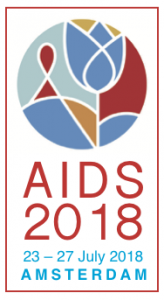Namibia close to achieving 90-90-90 targets
24 August 2018. Related: Conference reports, Treatment access, World AIDS 22 Amsterdam 2018.
Namibia is the first African country to have reached and overtaken the UNAIDS 2020 goal to have at least 73% of HIV positive adults virally suppressed – these findings from the Namibia Population-based HIV Impact Assessment (NAMPHIA) were presented at AIDS 2018.
In terms of 90-90-90 targets, this overall proportion represents 86% of people with HIV who reported knowing their status; 96.4% of those on ART; and 91.3% of those treated virally suppressed to <1000 copies/mL. Women in Namibia have achieved the UNAIDS targets with positive implications for both sexual and vertical transmission.
According to UNAIDS 2015 data, the population of Namibia was less than 2,500,000, with HIV incidence of 0.8% and prevalence of 14% – just over half of the population live in rural areas.
Since 2014 Namibia has implemented extensive scale up of national HIV prevention and treatment services. Between 2015 and 2017 the number of HIV tests administered, new HIV cases identified and people started on ART almost doubled. In 2017 approximately 186,000 people with HIV were receiving ART.
NAMPHIA was a cross-sectional household-based survey (two stage cluster sample design), conducted between June and December 2017 powered to estimate national HIV incidence as well as national and regional prevalence of viral load suppression <1000 copies/mL.
The sample was weighted to account for complex survey design. Eligible adults aged 15–64 years who consented were interviewed and offered rapid HIV testing according to national guidelines. All HIV positive samples were tested for viral load at a central laboratory. Samples were also tested for presence of ARVs (efavirenz, lopinavir/ritonavir and nevirapine).
The total respondents (23,700) included 16,939 adults and 6,761 children. Overall response rate was 67%; 71% of women, 62% men and 73% children ages 0–14 years.
Among the 16,939 adults, total HIV prevalence was 12.6%; female 15.7% and 9.3%. Prevalence peaked at 30% in women aged 45–49 years. By region HIV prevalence ranged from 7.6 to 22.3%. The highest prevalence was in the Zambezi region – presenting author Bernard Haufiku, Minister of Health and Social Services, noted this part of Namibia borders four other countries and there is a lot of cross border migration for work. He also noted that the regions with the lowest prevalence also had the highest rates of traditional circumcision.
Total HIV incidence was 0.4% (half that reported in 2015); 0.56% among women and 0.15% among men.
Among all HIV adults with viral load results, 77.4% were virally suppressed; 81.7% of women and 69.6% of men. The highest rates of viral suppression were in the 55–64 years age group; 93.5% women and 86.28% men. The lowest was among adolescents and young adults with only 50.5% of men aged 25–34 years achieving viral suppression.
By region viral load suppression ranged from 55.2% to 86.2%; higher rates of suppression were in regions with higher prevalence of HIV.
The total 90-90-90 cascade was close to full achievement of UNAIDS targets: 86.0%, 96.4% and 91.3%, of people diagnosed, on ART and virally suppressed respectively (adjusted for detectable ARVs). These proportions were 89.5%, 97.1% and 92.2% for women; and 79.5%, 94.9% and 89.5% for men. These were highest among people 55–64 years of age.
Once diagnosed, over 90% of men and women are linked to ART services and are virally suppressed. But many HIV positive adolescents and young adults do not know their HIV status.
Overall 14% of all HIV positive people do not know their status and strategies to improve HIV testing, particularly for men, are urgently needed to ensure Namibia’s continued impressive progress towards HIV epidemic control.
Bernard Haufiku concluded: “NAMPHIA data shows historic success and can also direct our programming to where it needs to be”. He added that there is: “No time to relax and no place for complacency, [these findings] should put an extra spike of energy into our programme”.
Reference
HamunimeN et al. Progress toward HIV epidemic control: Results from the Namibia Population-Based HIV Impact Assessment (PHIA). AIDS 2018. Amsterdam. 23–27 July 2018. Oral abstract THAC0408LB.
http://programme.aids2018.org/Abstract/Abstract/13468 (abstract)
https://www.youtube.com/watch?v=kPGD7ErMNQc (webcast)


 Polly Clayden, HIV i-Base
Polly Clayden, HIV i-Base